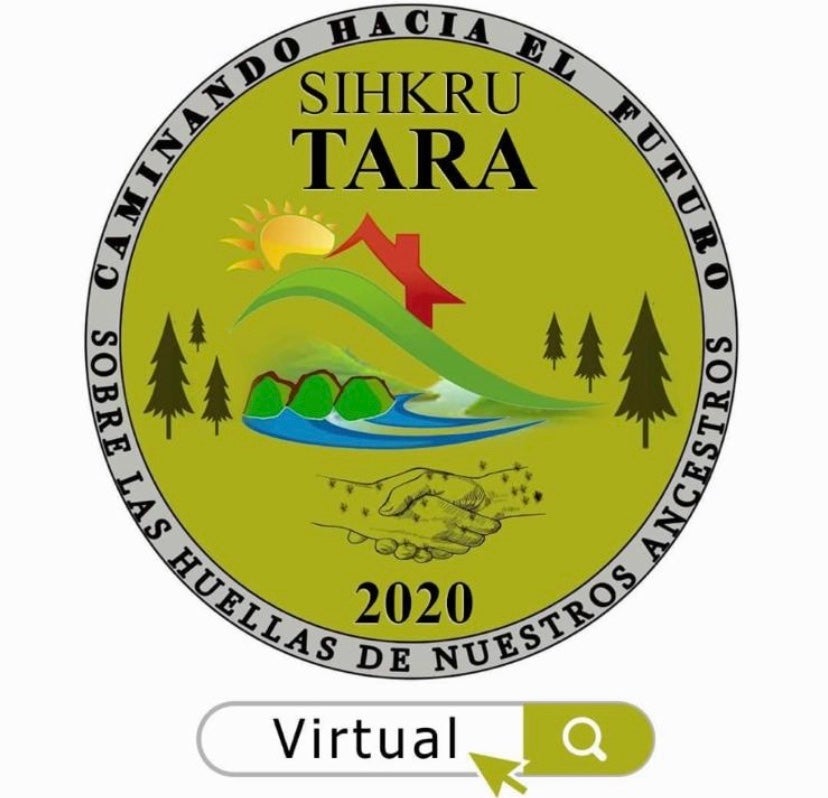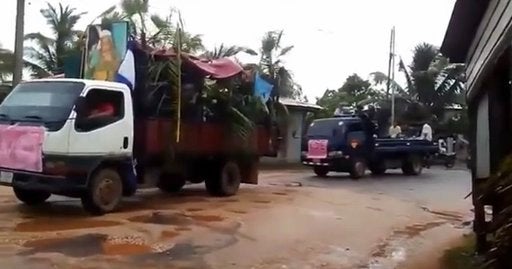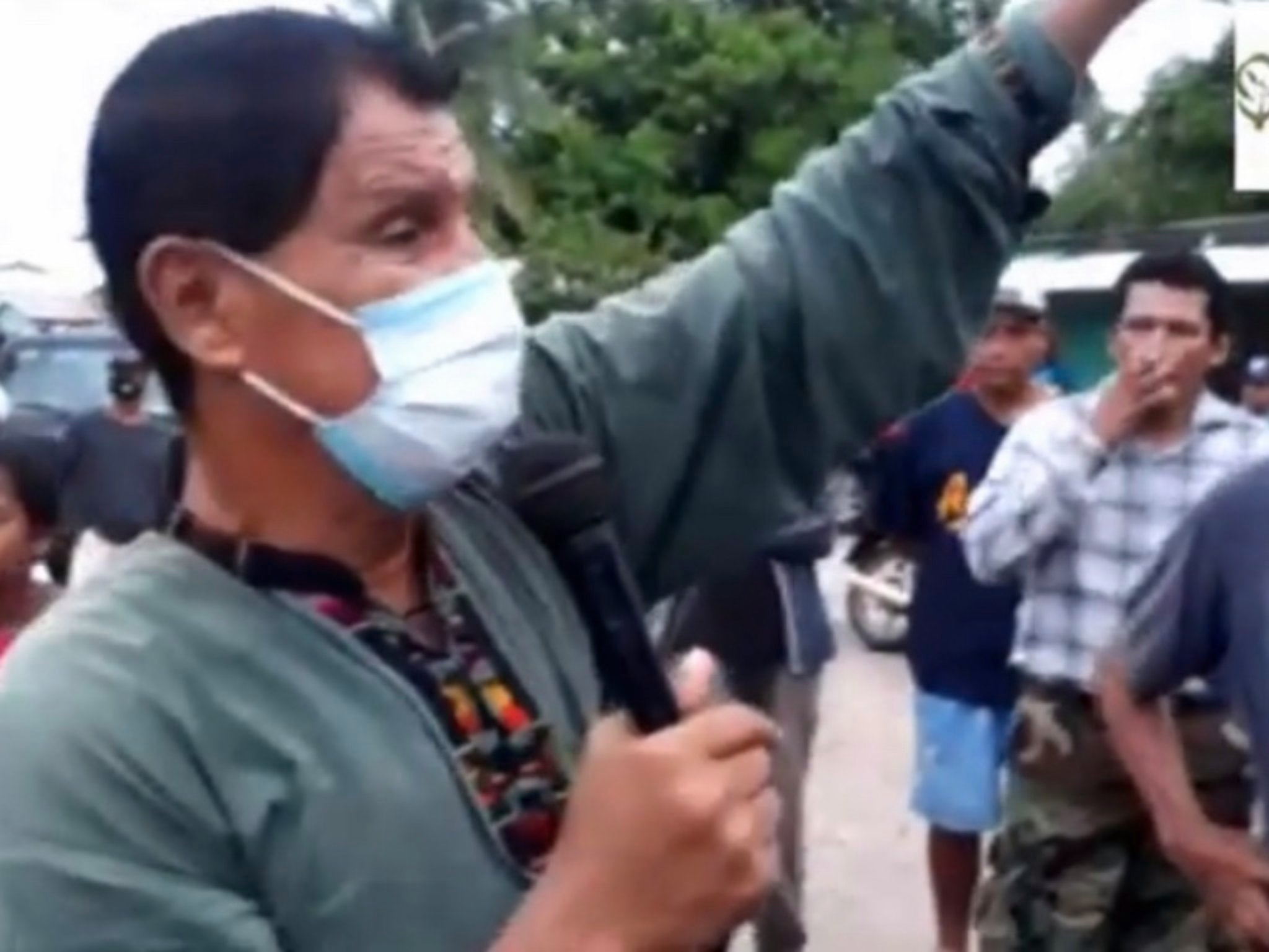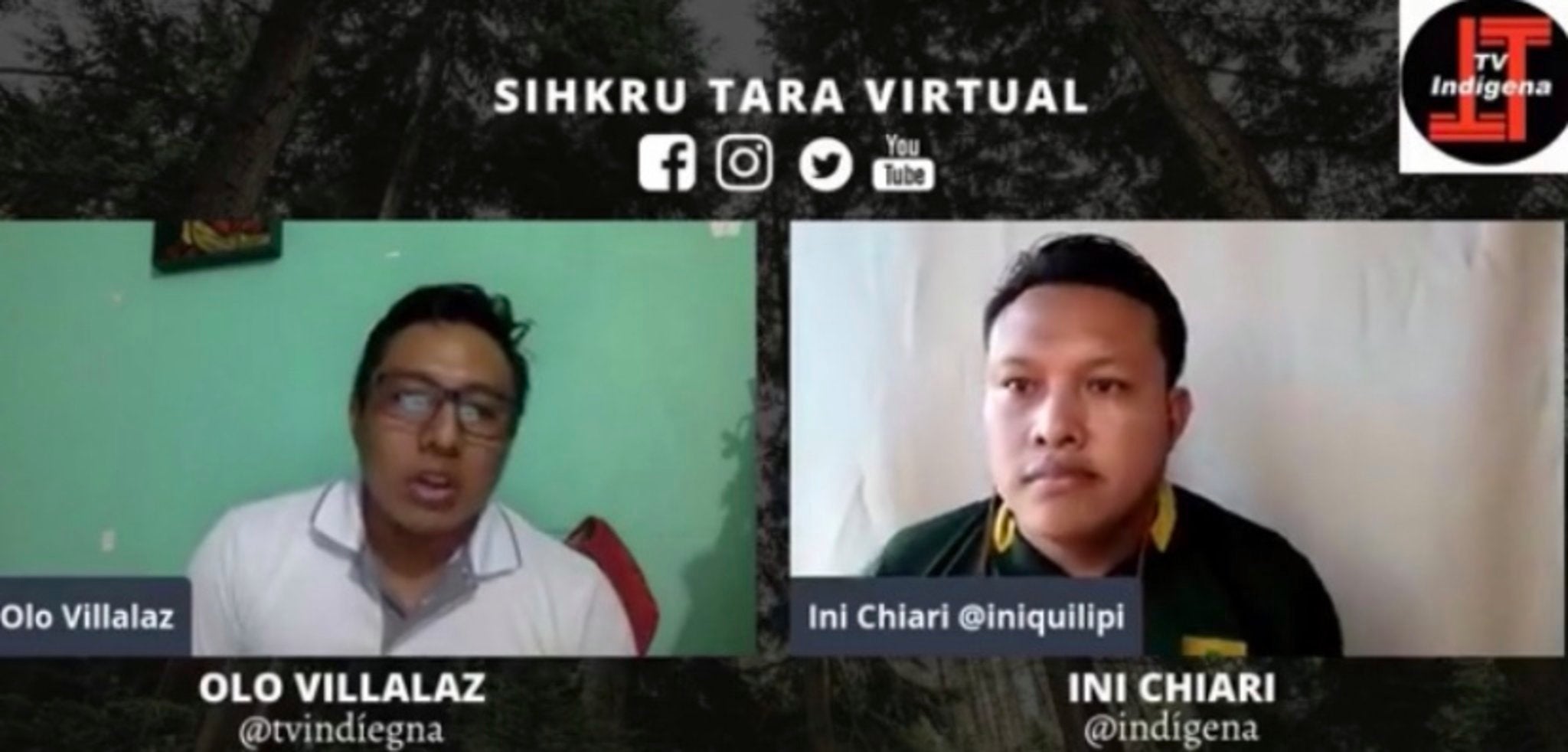
Media specialists Yuam Pravia and Sebastian Zuniga, photo by Wilton Allen.
By Laura Hobson Herlihy
“We have nothing to celebrate with the state oppression and pandemic, but we are sending a message to the youth to continue fighting for our rights in the name of the ancestors,” says Reynaldo Francis, Yatama Miskitu leader.
The annual Sihkru Tara Cultural Festival took place on August 9, 2020, the International Day of the World’s Indigenous Peoples. The Honduran Masta (Masta Asla Takanka/Unity of Muskitia) and Nicaraguan Yatama (Yapti Tasba Masraka Nanih Asla Takanka/Children of Mother Earth) Indigenous organizations had sponsored the Sihkru Tara festival each year since 2004, when the United Nations first designated the 9th of August as the day to commemorate Indigenous Peoples worldwide. This year, Masta and Yatama collaborated with the NGO Alianza Mesoamericana de Pueblos y Bosques and TV Indígena, transmitted by the Guna people in Panama, to produce the Virtual Sihkru Tara Festival on Facebook Live. The video, over three hours long, was uploaded to YouTube.

Adhering to recommendations of the World Health Organization and Pan-American Health Organization to mitigate community transmission of COVID-19, Miskitu and Guna youth made possible this virtual international production. The term ‘youth’ referred broadly to the younger generation who have revitalized indigenous identity and language, mainly through their use of digital media technology. This new generation since March 2020, had dispersed information on COVID-19 in their Native languages to prepare their communities for the impending pandemic.
The Bi-National Festival
Sihkru Tara celebrated the diverse cultures and Peoples of Muskitia, including the Miskitu, Pech, Sumu (Tawahka, Twahka, Mayangna, and Ulwa), and Rama Peoples; the Afro-Indigenous Garifuna; and Afro-descendant Kriols. The festival also served to unite the bi-national Miskitu people (200,000) and alternated yearly between countries. Hundreds of Miskitu festival participants, including dance troupes and musicians, traveled across the Wangki-Coco River, the international boundary between Honduras and Nicaragua.
Miskitu people retained the fundamental right to cross the Wangki-Coco River. Their Muskitia homeland existed long before the Honduran and Nicaraguan states declared independence. Masta and Yatama leaders regularly reunited during Sihkru Tara to develop a unified plan to fight for their Indigenous and territorial rights. Indeed, the motto of the festival read “In the footsteps of our ancestors, we walk toward the future.”
The Sihkru Tara 2020 festival broadcast opened in Puerto Lempira, Honduras (pop. 51,000). Singer-musicians Joaquina Acuña and Luter Thomas performed Miskitu songs for the first time, wearing facemasks and devoid of an audience. A lone Miskitu actor, Tony Manister, then took the stage on a platform of a decorated truck. “Yo soy hijo de la unta dukya…No queremos regalos…No queremos mentiras. Queremos nuestra tierra!”/”I am child of unta dukya (a rain forest spirit)…We don’t want presents…We don’t want lies. We want our land!” The photograph’s superimposed backdrop was a map of the 12 new Indigenous territories in the department of Gracias A Dios, known as the Honduran Muskitia.

Actor Tony Manister, Puerto Lempira, photo by Carlos Molinero
TV Indígena’s announcers Ini Chiari and Olo Villalaz, speaking in Spanish and broadcasting from Panama City, provided context to the Sihkru Tara--they both had attended the 2017 festival in Nicaragua. Villalaz then gave an emotional tribute to the late Nicaraguan Miskitu youth leader, Mark Rivas, killed earlier this year on January 3. TV Indígena showed a short film that began with a photograph of Rivas in Paris, at the 2015 United Nations Climate Conference (COP 21). In the video that followed, Rivas delivered his main message and mantra, “Indigenous Peoples are guardians of the world’s remaining rain forests.”
TV Indígena then switched their live coverage, to a small caravan of truck floats in Bilwi (pop. 85,000), the capitol of Nicaragua’s North Caribbean Autonomous Region (RACN). The caravan was the Miskitu version of the drive-by, a common method of utilizing vehicles to acknowledge birthdays and funerals during the global pandemic. The caravan ended its route in the town center near the iconic Indian statue, which represented the Indigenous struggle. A sukia (shaman) in bright orange PPE (Personal Protective Equipment) burned branches nearby as part of a healing ceremony.

Truck floats in Bilwi, photo by Ruth Jackson
The highest Miskitu leader and founder of Yatama, Brooklyn Rivera, stood between the Indian statue and the shaman. He addressed Yatama Radio Yapti Tasba Bila Baikra (The Voice of Mother Earth) news journalists. Wearing the compulsory facemask, Rivera stated in Miskitu, “The 16th annual Sihkru Tara this year is different due to the sanitation crisis. The borders are closed, and we cannot cross the Wangki River. The Honduran and Nicaragua Miskitu can’t travel to unite with each other.” The border shut-down was due to the Honduran government’s enforcement of restrictions due to COVID-19. The Nicaraguan Sandinista state government has neither called for border shutdowns or cancellation of public schools.

Yatama leader Brooklyn Rivers, Bilwi, Photo by Ruth Jackson
Rivera continued, “This year’s Sihkru Tara is not a celebration but a protest against the human rights violations committed against the Peoples of Muskitia by the Nicaraguan state.” He then explained the caravan, “The first truck represents the exploitation of natural resources in Muskitia. The second truck represents colonization of Indigenous lands; the third truck represents electoral fraud committed by the Nicaraguan Sandinista state and their continued political repression; and the fourth truck represents traditional medicines we are using to fight COVID-19.” This truck was decorated with large drawings of the plants they used to fight symptoms of coronavirus, such as fever, cough, headaches, and shortness of breath; and the names of the plants, (ginger, eucalyptus, lemon, miniscule bamboo from coniferous forest, and beach mulberry) written in Miskitu.
Guna TV announcer Chiari commented, “Qué bueno. Nuestros hermanos Miskitos están en la lucha todavía y nosotros estamos viendo esto.”/“How great that the Miskitu continue fighting and we are watching this.” He congratulated the Miskitu people, on behalf of Indigenous Peoples worldwide. Followers of TV Indígena’s Facebook Live broadcast commented from Spain, Canada, the United States, Mexico, Honduras, Nicaragua, Panama, and Columbia. The festival provided hope during the COVID-19 pandemic, which was disproportionately killing Indigenous Peoples throughout the Americas.

TV Indigena Co-hosts Ini Chiari and Olo Villalaz, Panama
COVID-19
The Nicaraguan Sandinista government did not respond to the global pandemic, denied its existence, and underreported cases and deaths. In May, community transmission of COVID-19 began along the Nicaraguan Caribbean coast. Those debilitated by the virus initially went to Bilwi hospitals. Medicines and ventilators were scarce. Families complained they could not get to their sick and dying relatives, and that the Sandinista state was orchestrating secret night burials. Miskitu people with symptoms of coronavirus, stopped going to hospitals and opted to be treated at home with plant remedies. Two months later, COVID-19 cases and deaths spiked in the more rural Mayangna and Ulwa communities.
The Honduran government reacted more responsibly to COVID-19. By mid-March, Honduras had closed its borders and called for curfews, banning all non-essential movement of Peoples in major cities. Miskitu economic migrants from Tegucigalpa, San Pedro Sula, La Ceiba, and the island of Roatán lost their livelihoods and solicited help to return home. Masta leaders sponsored the migrants’ return to Muskitia. The returnees were provided with quarantine facilities in Puerto Lempira, with the assistance of the NGO MOPAWI (Mosquitia Pawisa).
COVID-19 reached the Honduran Muskitia in July. Those suffering from the respiratory illness had little access to health care and relied on plant remedies. No real numbers confirming the numbers of coronavirus cases cured by natural medicines existed in either Honduras or Nicaragua.
Sihkru Tara embodied a spiritual significance. The Miskitu traditionally held Sihkru Tara once a year, as a celebration of rebirth and renewal. After participants imbibed an intoxicating fermented beverage, called misla or saman laya, grievances were forgiven and forgotten. Sihkru Tara also incorporated Pura Yapti, a ritual enacted after a community member died, to send their spirit to the other world. One-hundred Indigenous people hailing from the Nicaraguan Caribbean coast, and more than 30 from the Honduran Muskitia, have died from COVID-19.
--Laura Hobson Herlihy is a lecturer in Latin American & Caribbean Studies at the University of Kansas.

